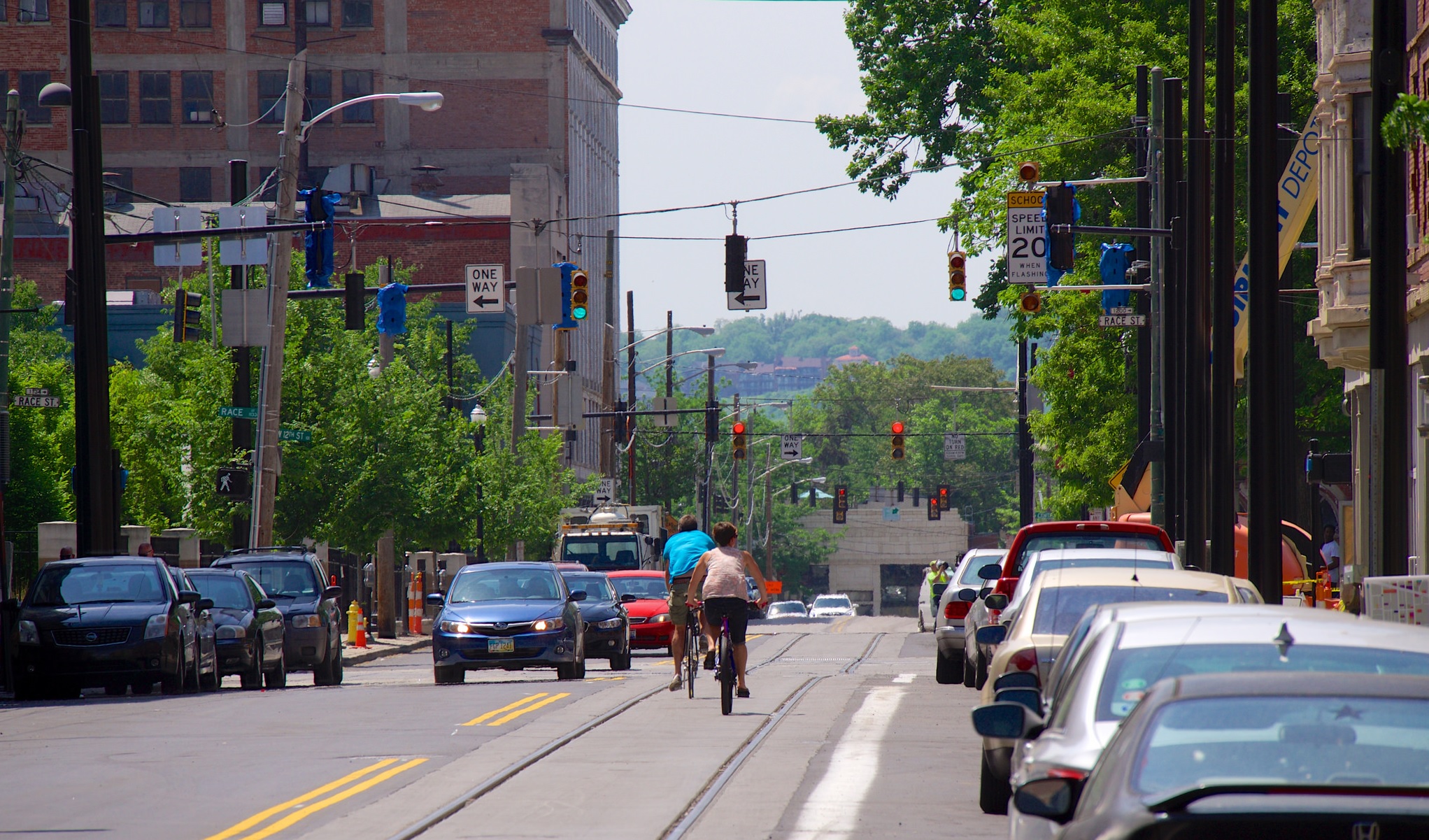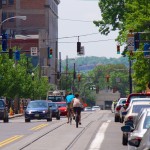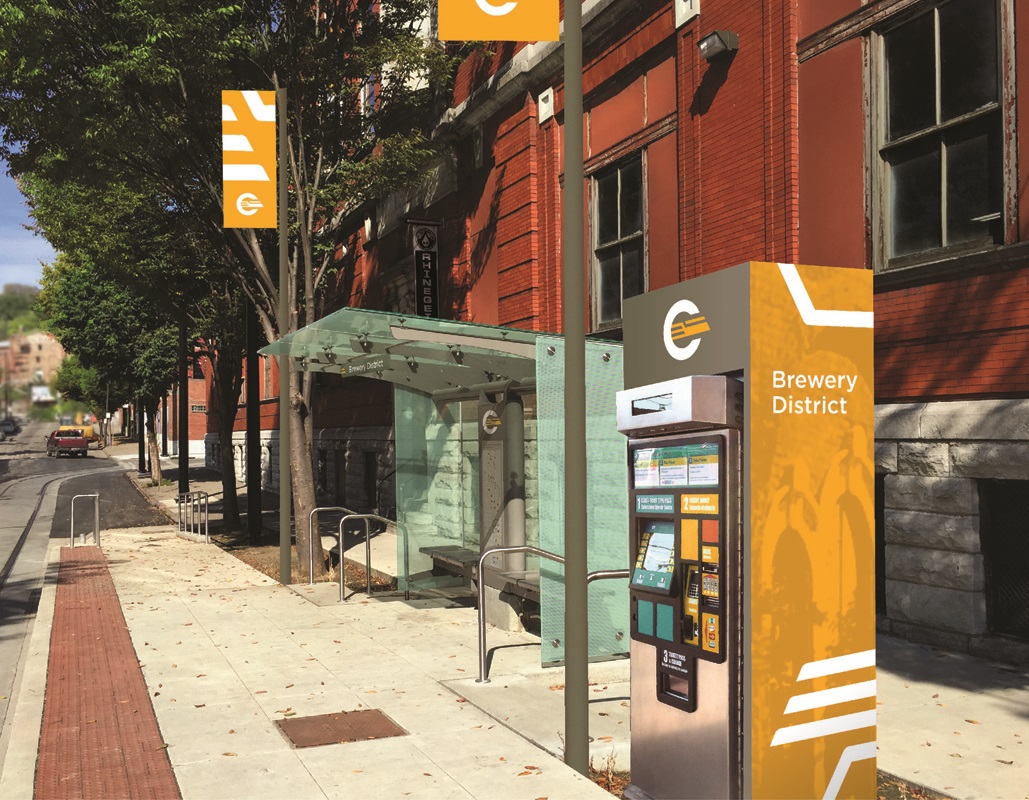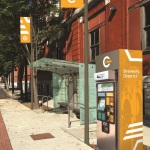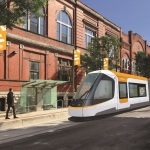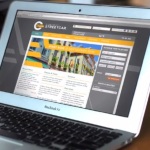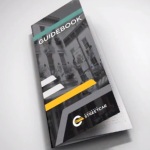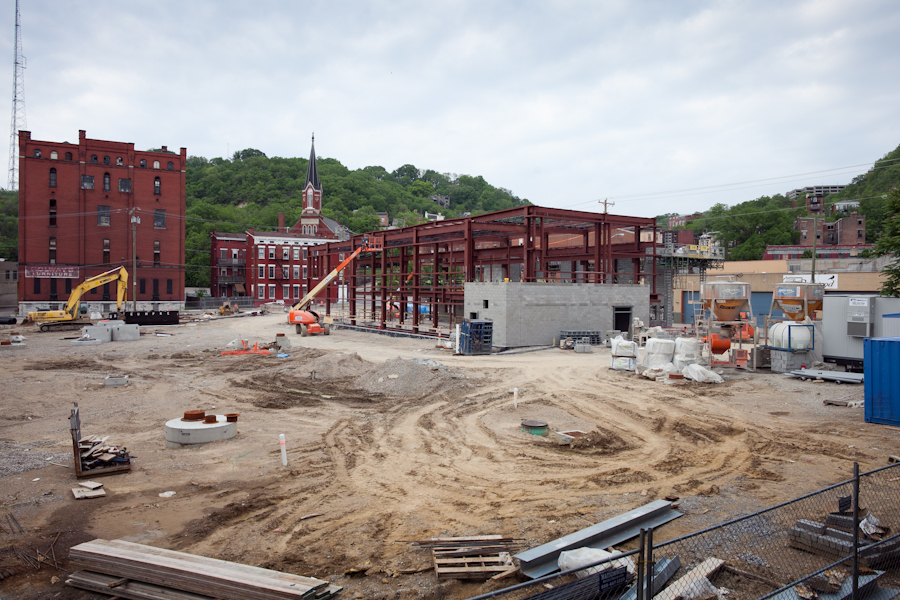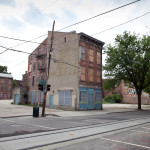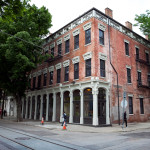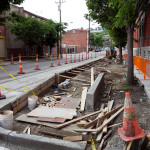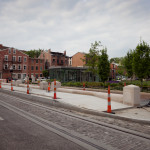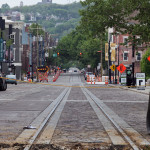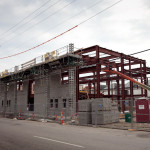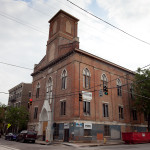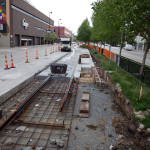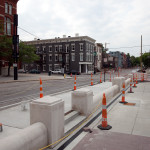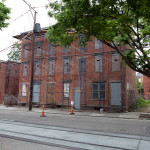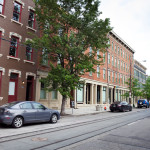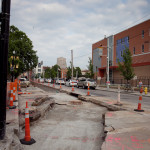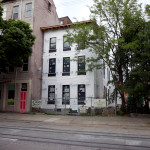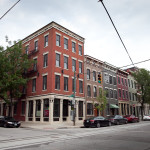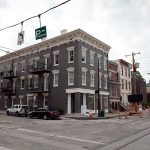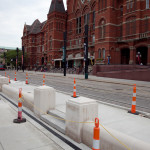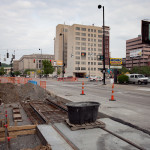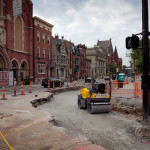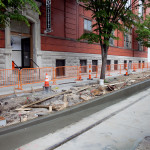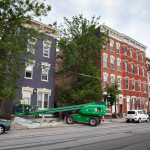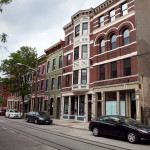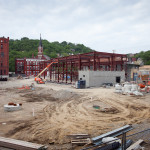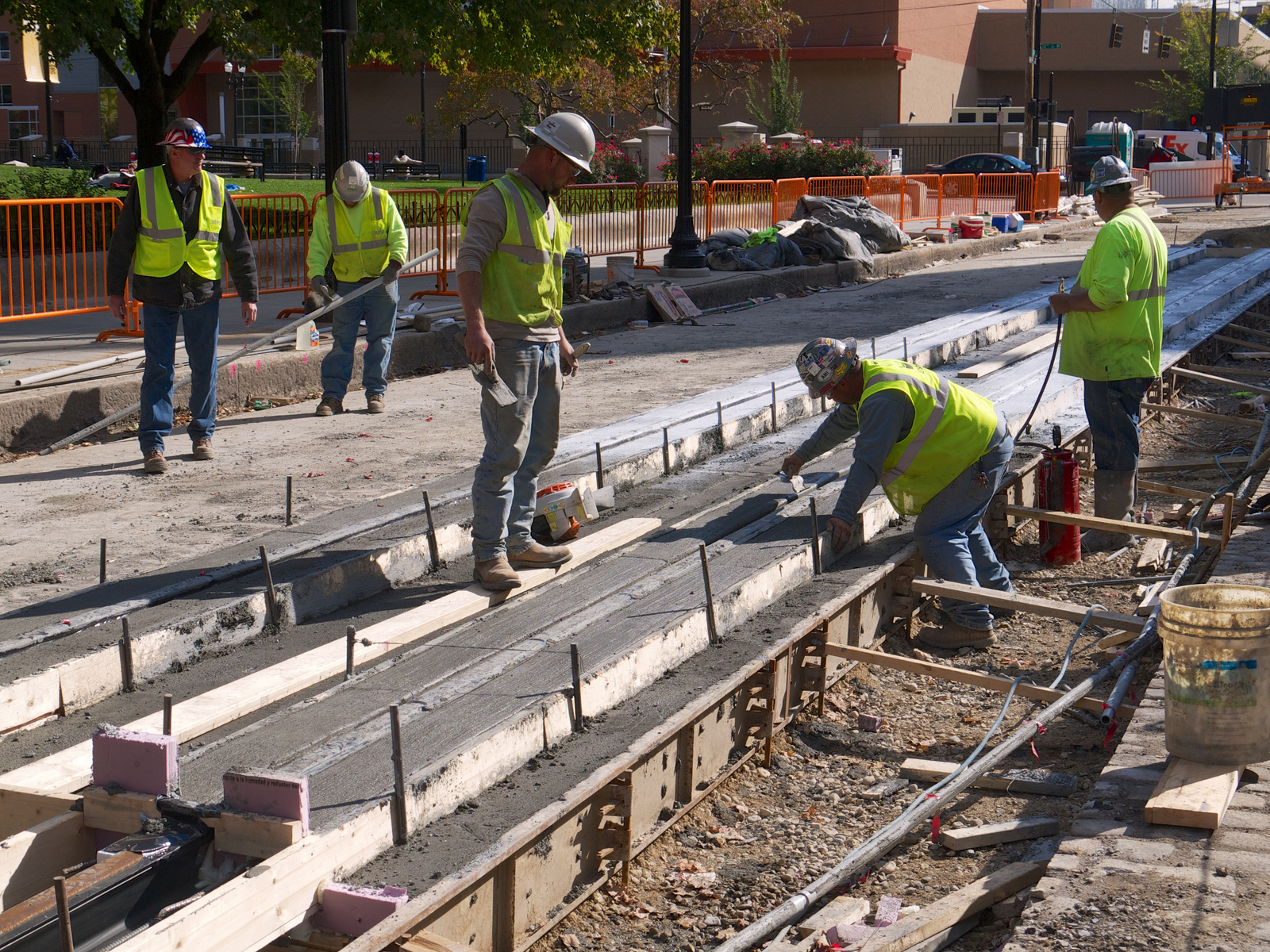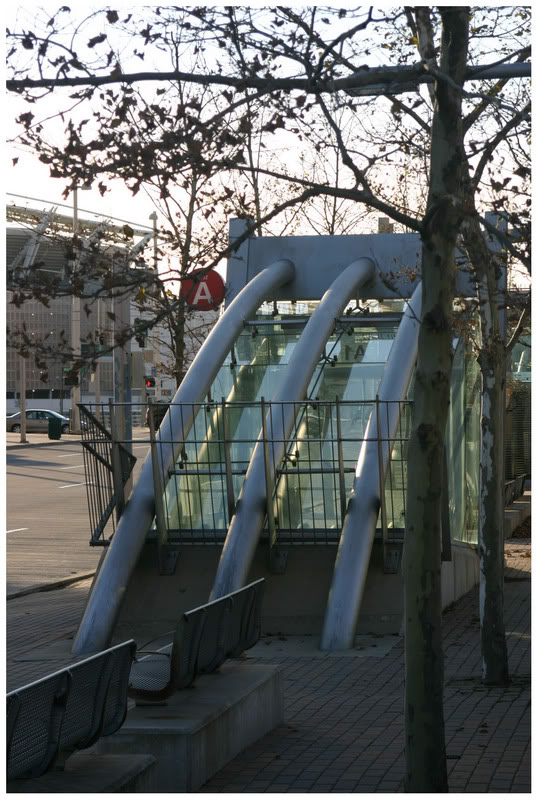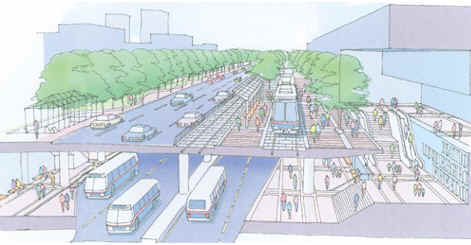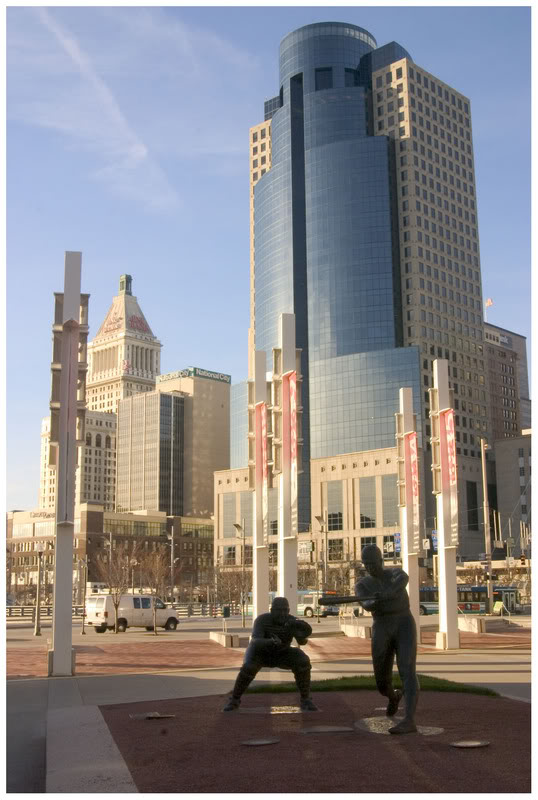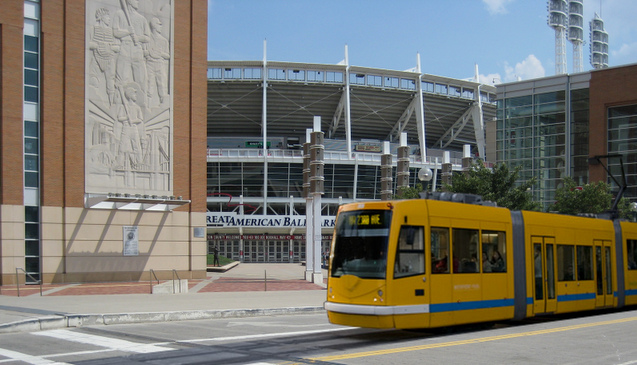Last Tuesday, All Aboard Ohio held their Spring meeting at the newly-opened Taft Ale House in Over-the-Rhine.
President of the Southwest chapter, Derek Bauman, ran the meeting, which not only included discussion of advocacy for interstate passenger rail in Cincinnati, but also of the ongoing construction of the Cincinnati Streetcar.
Several community leaders and representatives were present, including Streetcar Project Manager John Deatrick, Metro’s Rail Operations Manager Paul Grether from Metro, the chief of staff for Councilman Kevin Flynn, a representative from the Cincinnati Preservation Society, the president of Queen City Bike, and even Cincinnati Union Terminal’s Amtrak station manager.
To begin the meeting, Deatrick and Grether talked about the construction of the streetcar system, which can be seen directly outside of Taft’s Ale House, and the future operation of it. Deatrick informed the crowd that almost 70% of the construction is complete, which is ahead of schedule, and the city expects the first streetcar delivery by September.
When asked to address the ongoing discussion about the next phase to Uptown, Deatrick declined to comment.
Grether then explained how his organization acts as the conduit for federal funds to the streetcar and will be the future operator of the system. He also discussed Metro’s plans to schedule the streetcar in a manner that complements and fully integrates with Metro’s bus operations, and those of TANK.
Another key point that Grether mentioned is that the technology is in place to be able to give streetcars signal priority, should leaders at City Hall decide that is desirable. Such a move would quite significantly improve travel times and performance.
As the conversation moved on, Bauman spoke about the group’s efforts to establish daily passenger rail service between Cincinnati and Chicago. Not having daily rail service to Chicago damages business competitiveness for the city, Baumann said, considering that Milwaukee, St. Louis, Detroit and Indianapolis already currently boast such service.
The effort has received renewed interest as of late due to the debate surrounding the future of the Hoosier State line, which connects Chicago to Indianapolis. Project proponents scored a big win recently when funding was picked up by the State of Indiana to continue its service. Those efforts even attracted the attention of Senator Joe Donnelly (D-IN) in a letter he penned to the Federal Railroad Administration about the possibility of future extensions of the line.
Since assuming the presidency of the local chapter, Bauman has made a variety of changes to allow for greater participation and engagement. Meetings are no longer confined to members, for example, and they have begun reaching out to the business community and area universities.
Bauman said that he hopes this approach will help make daily passenger rail service a reality for the Cincinnati region at some point in the near future.
Those that are interested in supporting the efforts of All Aboard Ohio can do so by making a tax-deductible donation to the organization on Tuesday, May 12. On this day the Columbus Foundation will make matching donations to a collection of non-profits throughout the state, including All Aboard Ohio. You can make secure donations to the group on their website.
